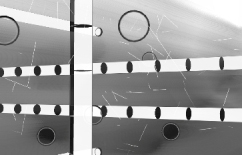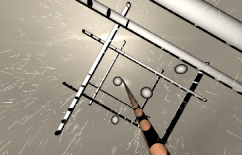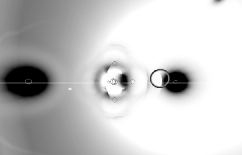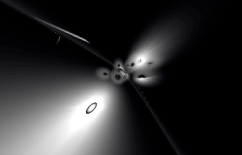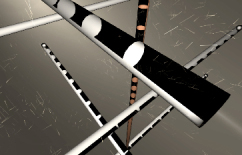Monolake Live Surround is a ongoing research project, starting in early 2009.
It is a common notion that in (electronic) dance or club music sound simply comes from all directions, and that even the concept of having a stereo signal is unnecessary luxury, since people who dance only care about the beat, a certain volume and maybe a bit about an acceptable frequency-response of the PA.
However, club music evolved, and so did modern PA systems. If music production can deal with subtile yet noticeable details of space and depth, why should this amount of detail not be transmitted to the dance-floor? It is obviously true that what keeps the dancer moving is the beat, but what creates a sense of something big, what overwhelms people is also the sound of the music.
As a live performer one does not rely on stereo sources, but can construct a scenario where certain important elements are distributed to four or more individual channels if the PA supports it. This opens dramatic possibilities for creating a concert experience beyond the DJ setup. And beyond home listening, too.
